American-made F-16 Fighting Falcon could soon be employed in the skies over Eastern Europe after the initial batch of the all-weather multirole fighters pledged to Ukraine arrive to aid Kyiv’s war effort against Russia. Ukrainian pilots have been training for months in the United States and the UK to operate the Fighting Falcon. How the F-16 will actually stack up against the very Soviet-era fighters it was designed to initially confront during the Cold War remains an unanswered question.
However, the F-16 already has a long and proven combat history. It has been adopted by more than two dozen nations around the world, including Israel, where it has been employed in numerous combat operations.
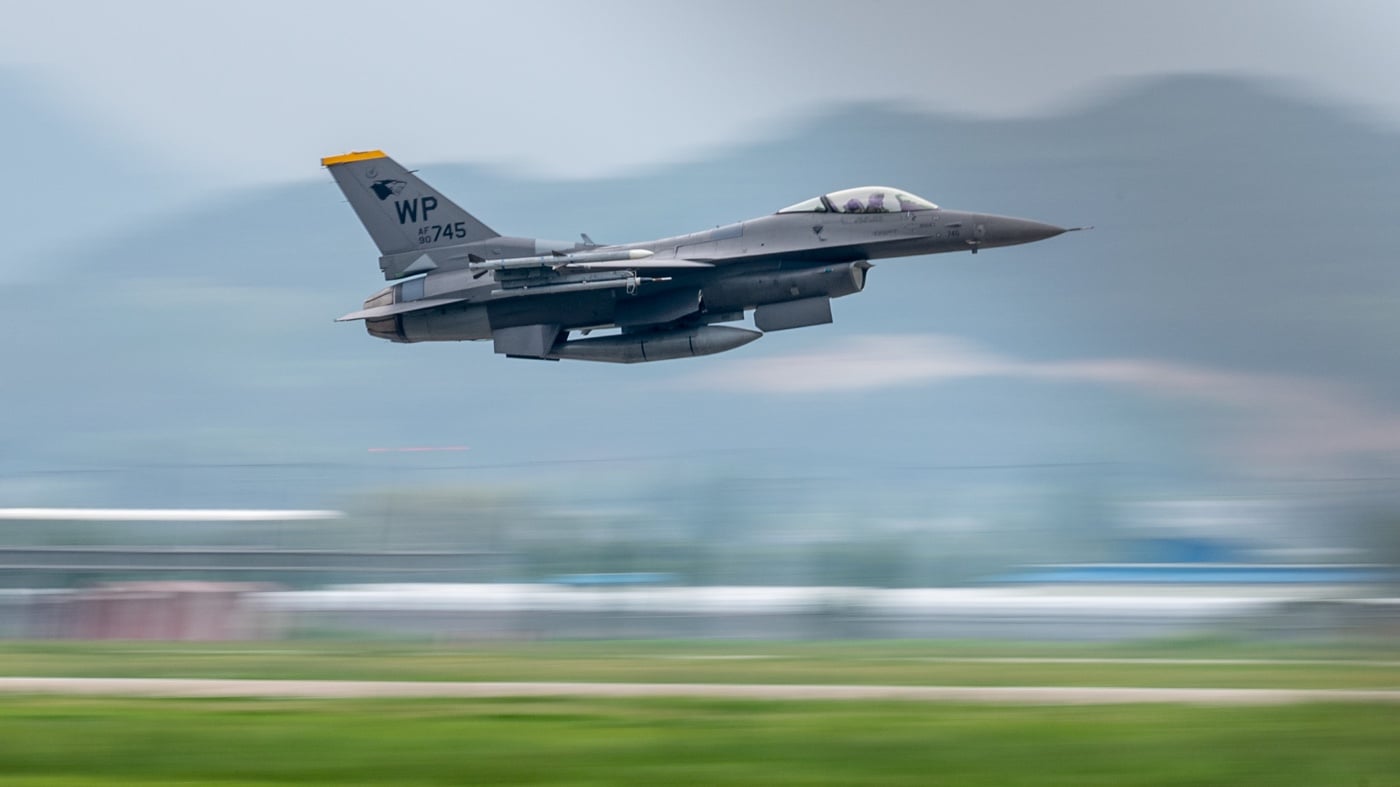
It was also 50 years ago this past January that the Fighting Falcon made its first flight. Today, most of the military aviators operating the aircraft were born after it entered service with the United States Air Force in 1978. While it has been steadily improved and updated, this is a testament to its original design and longevity.
Origins of the Fighting Falcon
Given the proven track record of the F-16, it might be hard to imagine now that it essentially began as a technology demonstrator, and as part of a program to develop a capable multirole fighter. Today’s high-flying Fighting Falcon originated with the United States Air Force’s Lightweight Fighter (LWF) program in the early 1970s, which sought to develop a fighter jet that would be smaller, and more importantly cheaper to produce than the F-15 Eagle.
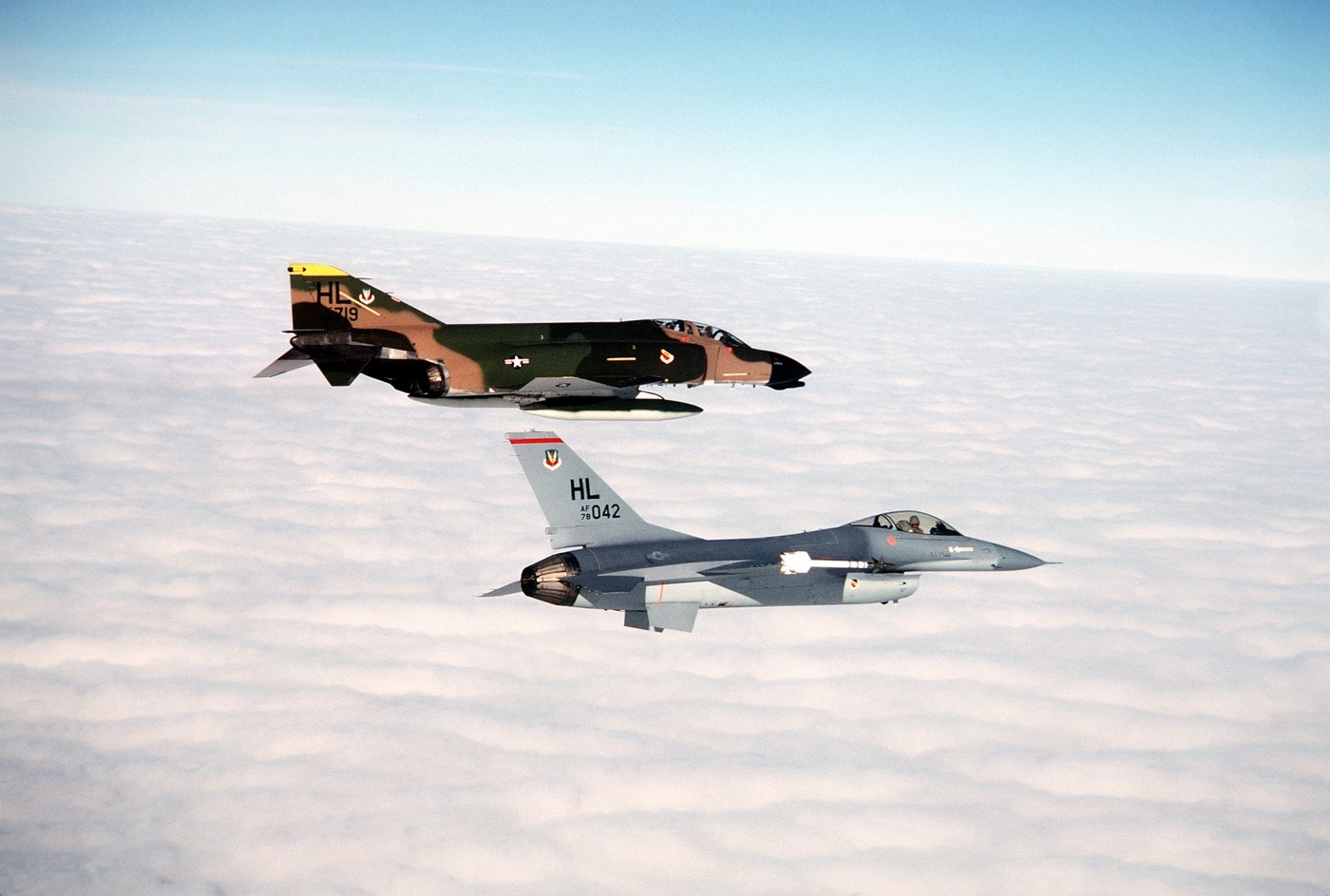
The LWF wasn’t originally intended to lead to the production of a combat aircraft, but rather to establish what might be possible — and also determine the cost. The General Dynamics Model 401 was entered into the competition against a simplified Northrop P530, with the aircraft later being designated the YF-16 and YF-17 respectively. The latter aircraft had the unofficial nickname “Cobra,” although it is unclear if that would have remained had the aircraft been adopted by the Air Force.
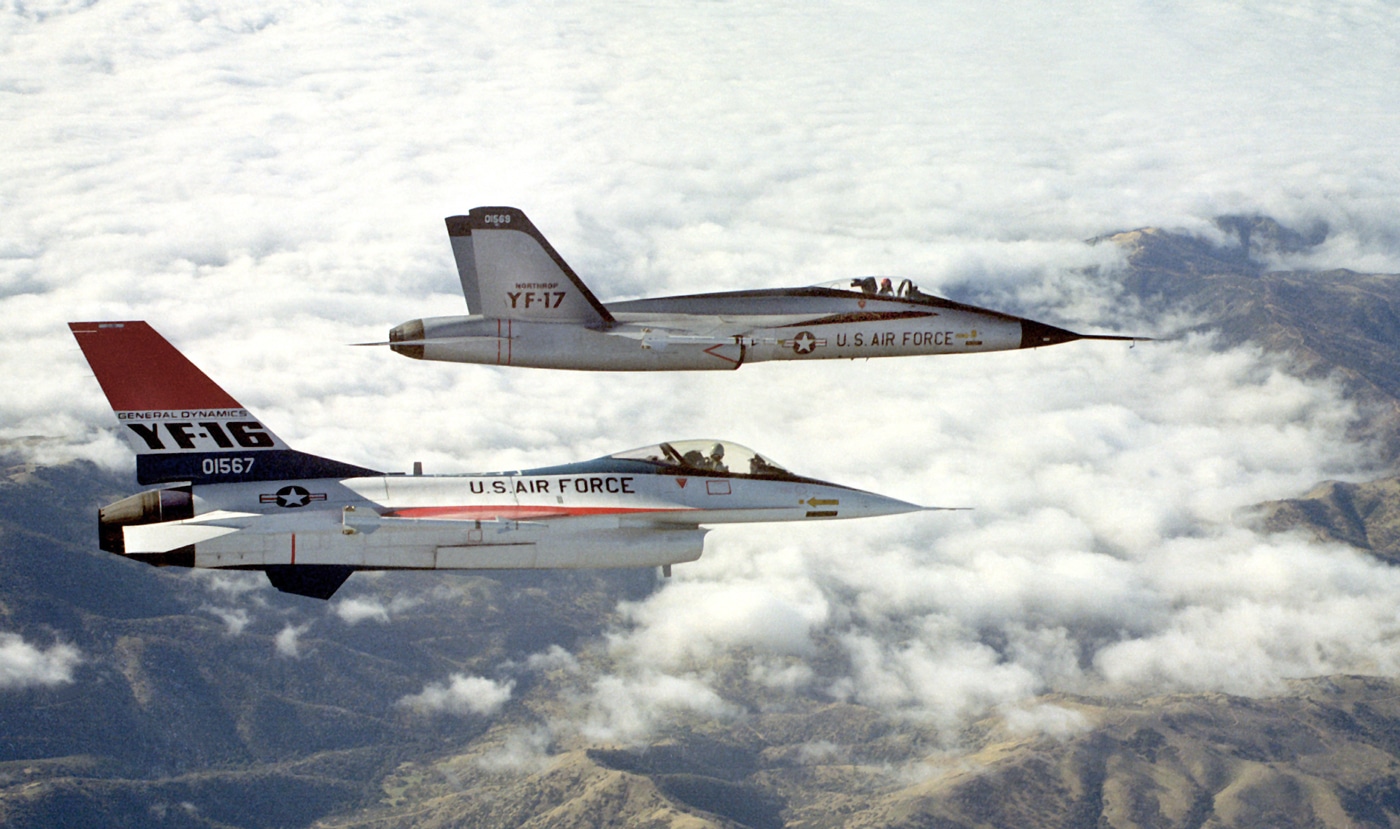
However, it was a moot point.
Though the LWF was initiated as a mere technology demonstrator, it evolved and was recast as the Air Command Fighter (ACF) program to develop a larger and much more capable multirole aircraft that could be employed by the Tactical Air Command (TAC), and even offered for foreign military sales — notably NATO allies Belgium, Denmark, the Netherland and Norway. Each was seeking a replacement for their aging F-104G Starfighters then in service.
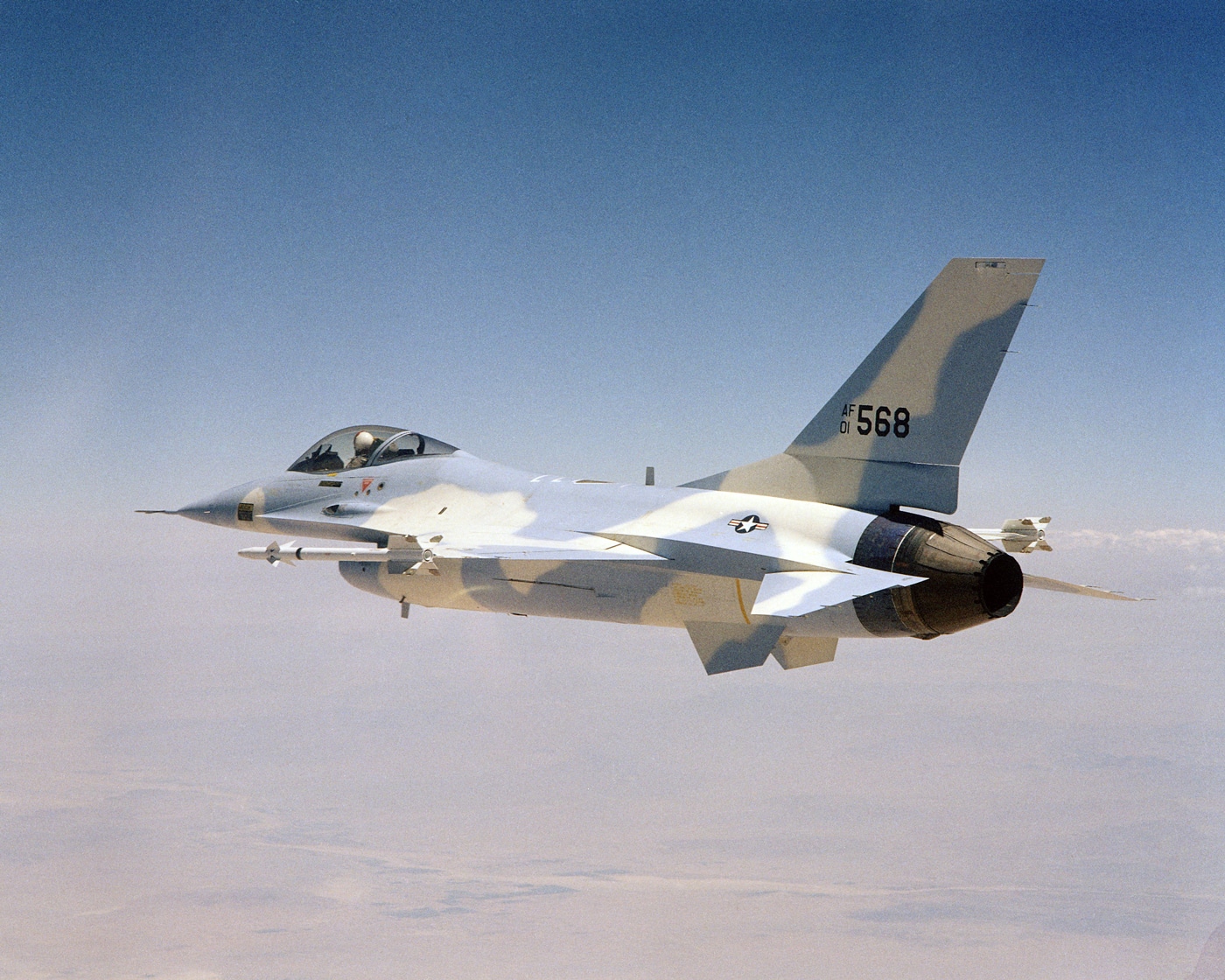
As the ACF program progressed, then Secretary of Defense James Schlesinger announced that the U.S. Air Force would acquire at least 650 of the new fighters, though the figure increased as development continued.
The YF-16 demonstrator made its first “official flight” in February 1974 — but it actually took to the skies a few weeks earlier during a taxi test when its aerodynamics proved so effective it essentially couldn’t stay on the ground. Soon after, a competitive fly-off against the rival Northrop YF-17 was conducted, and the YF-16 came out on top. It quickly evolved into the larger and more capable F-16 Fighting Falcon.
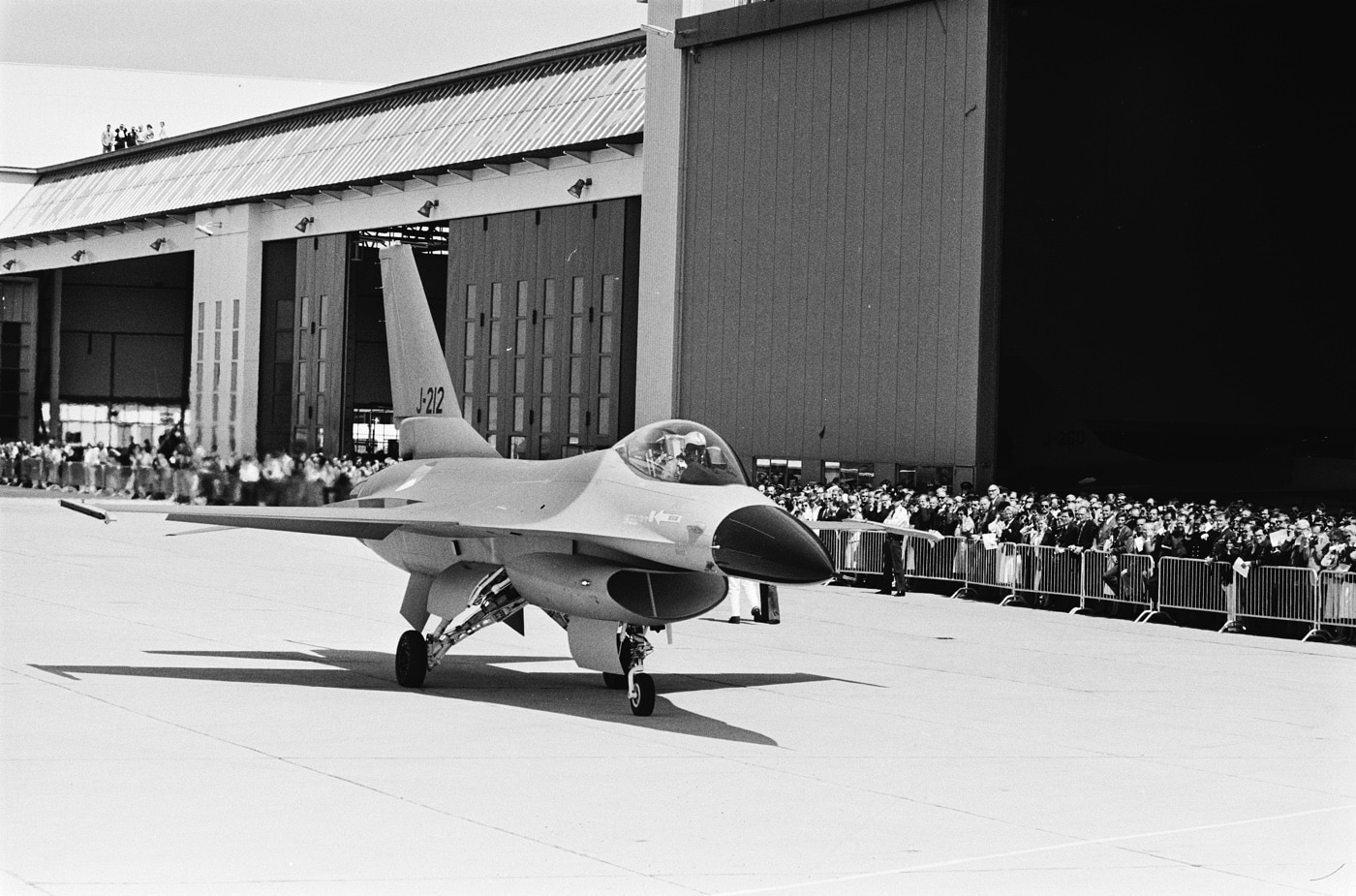
In January 1979, just five years after that accidental maiden flight, the first operational F-16A was delivered to the United States Air Force’s 388th Tactical Fighter Wing at Hill Air Force Base (AFB), Utah.
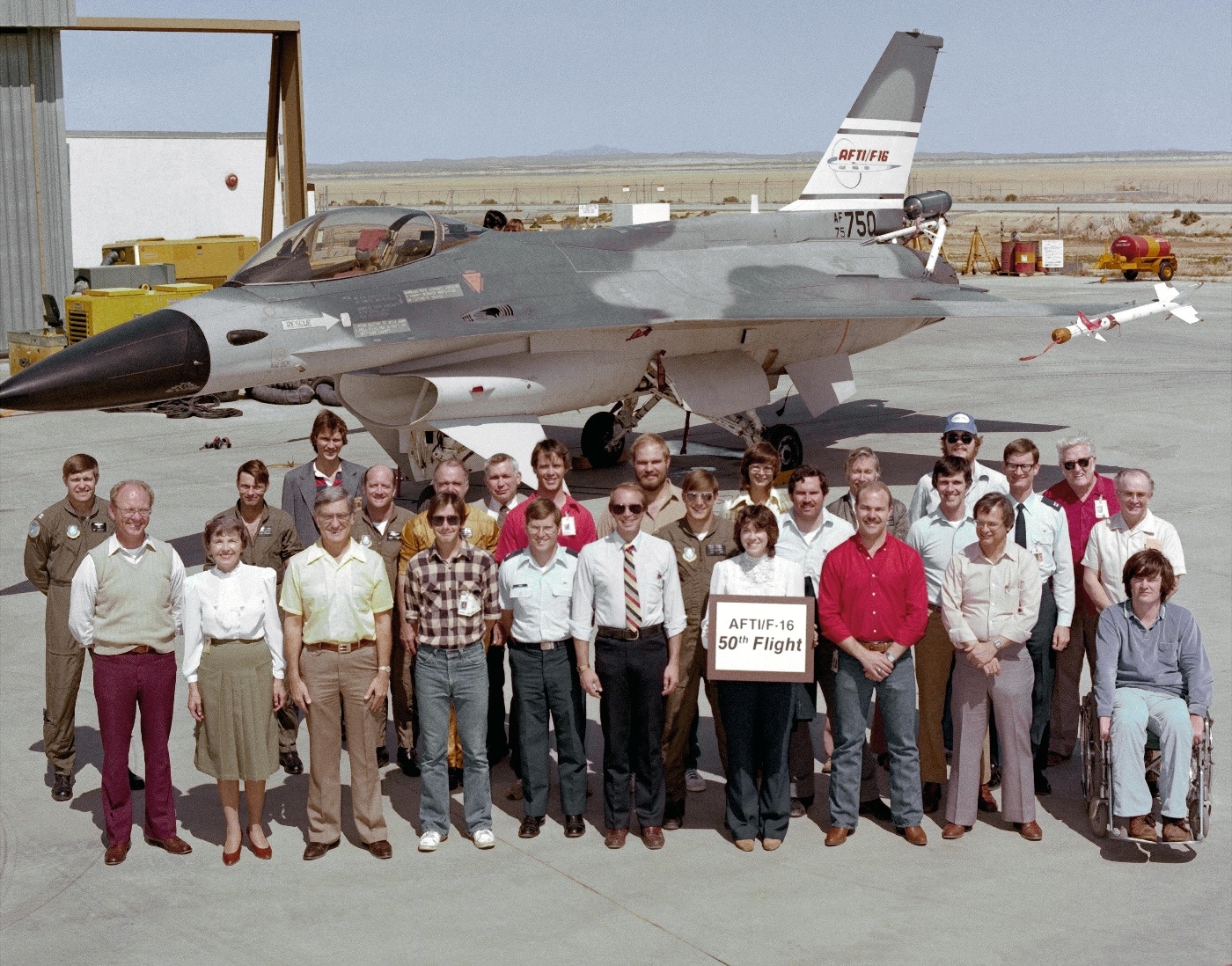
While the United States Air Force is no longer acquiring new F-16 Fighting Falcons, it remains the largest operator of the multirole fighter, with more than 2,000 airframes delivered. In addition, Lockheed Martin — which acquired General Dynamics’ aviation business in the 1990s — continues to produce the fighter aircraft for foreign military sales. It remains in service in the air forces of two dozen nations around the globe, and could soon be employed in combat against Russian aircraft in Ukraine.
An Unstoppable Warbird
From the moment the Fighting Falcon was hatched, there was an emphasis on the F-16 being a Control Configured Vehicle (CCV) with independent or “decouple” flight control surfaces — which made it possible for the aircraft to maneuver in one plane without movement in another, notably being able to turn without having to bank.
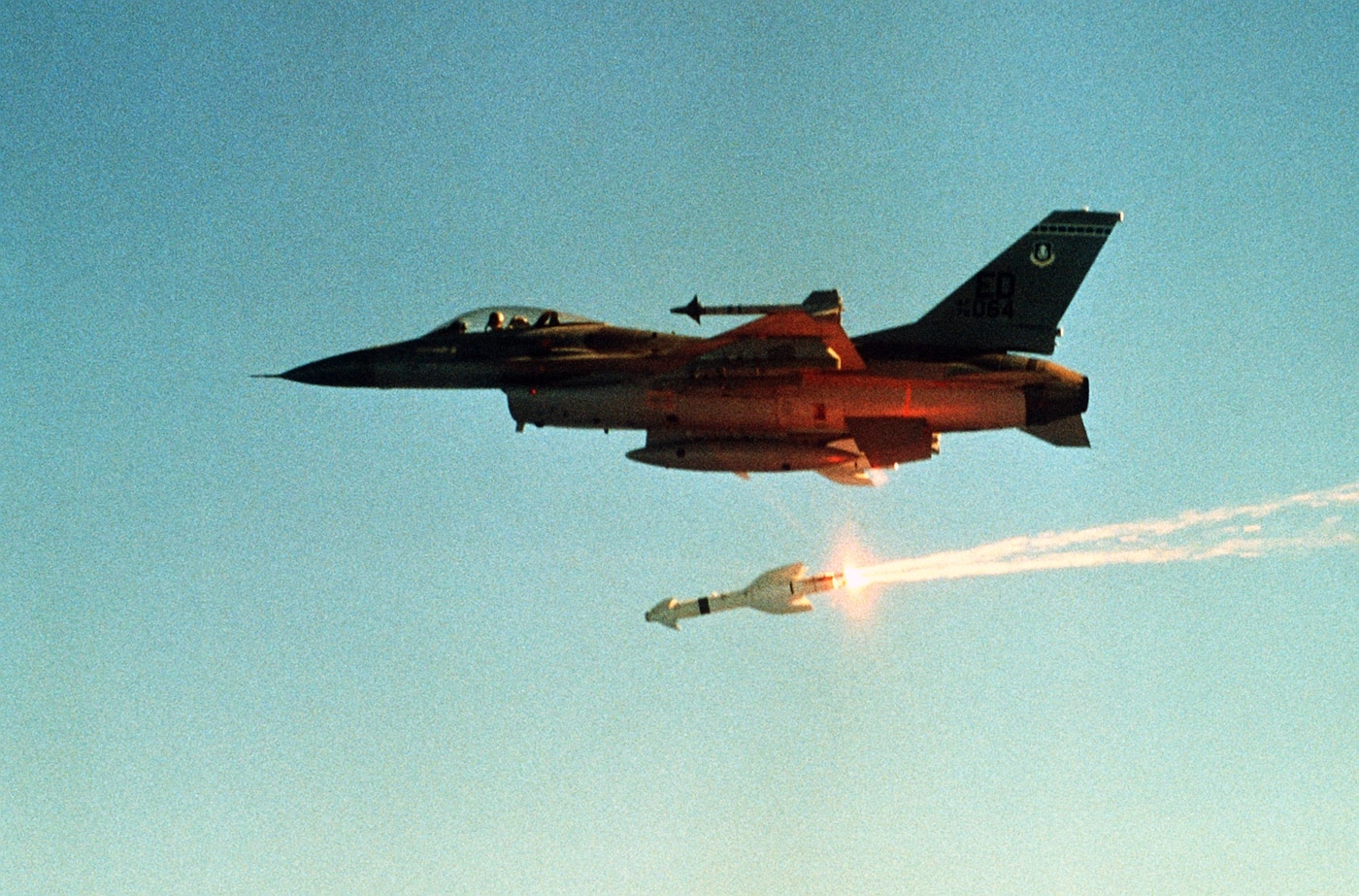
The configuration of the F-16 included a single vertical tail, mid-mounted tailerons, and mid-mounted wings, with a 40-degree taper on the leading edge. The aircraft’s multi-spar, multi-rib aluminum fin also featured a graphite-epoxy skin with a rudder made of an aluminum honeycomb structure, powered by a servo-actuator. The Fighting Falcon has also been noted for its unusual engine intake under the fuselage, which is simple with no moving parts — while the location ensures the engine is not starved of air even at high angles of attack.
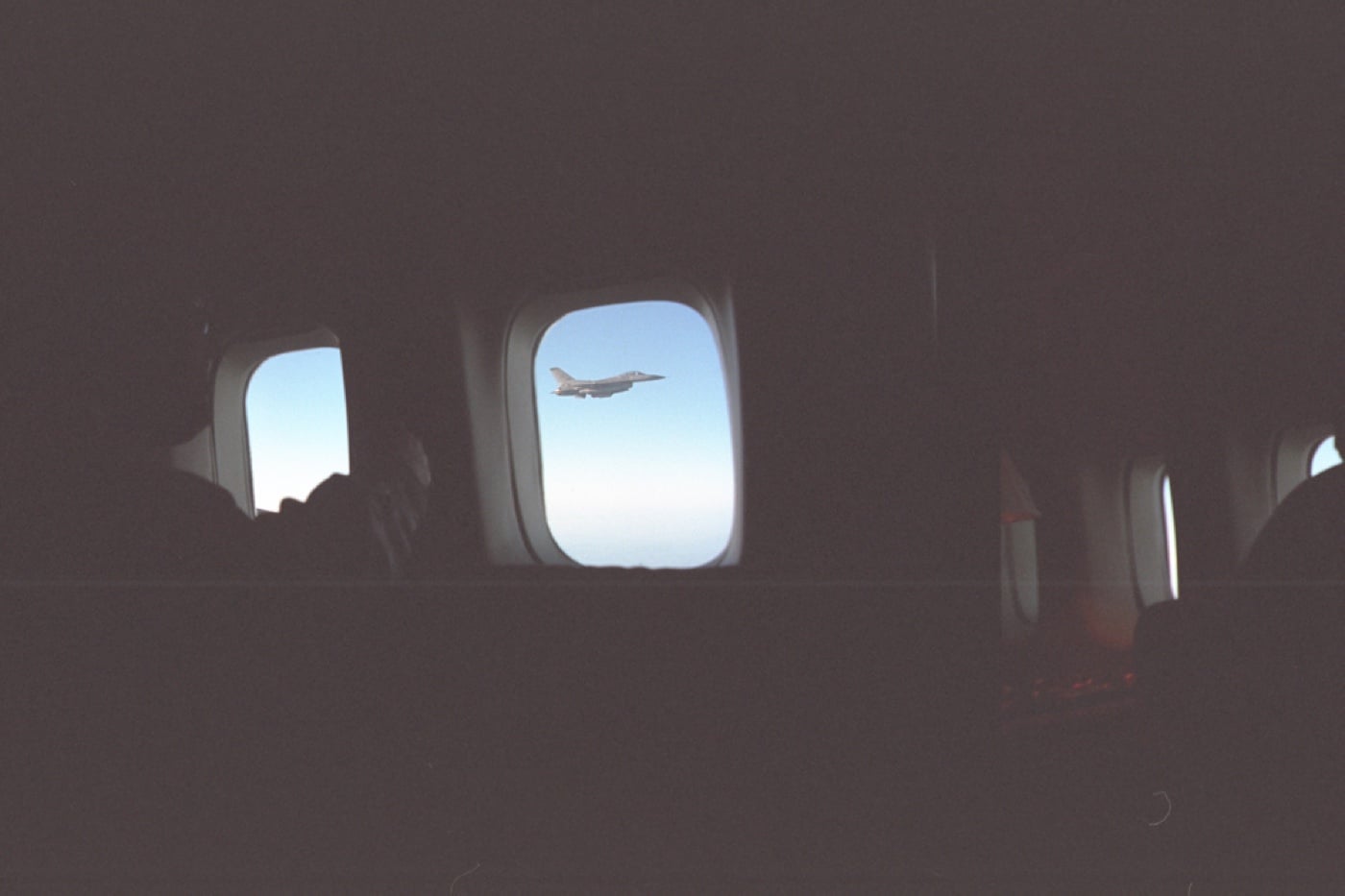
The design of the multirole fighter allows the pilot to fly by HOTAS (Hands on Throttle and Stick), while the cockpit provides an exceptional all-around view with the only canopy frame being positioned behind the pilot in the single-seat configuration. The only forward obstruction is a pencil-thin AOE nosewheel steering indicator, while control inputs are by a force-sensing sidestick controller on the right console and force-sensing pedals — all of which were positioned for maximum application of force when required. This has been updated with large color displays, night vision goggles (NVG) compatible lighting, color moving map, and increased-area heads-up-display (HUD).
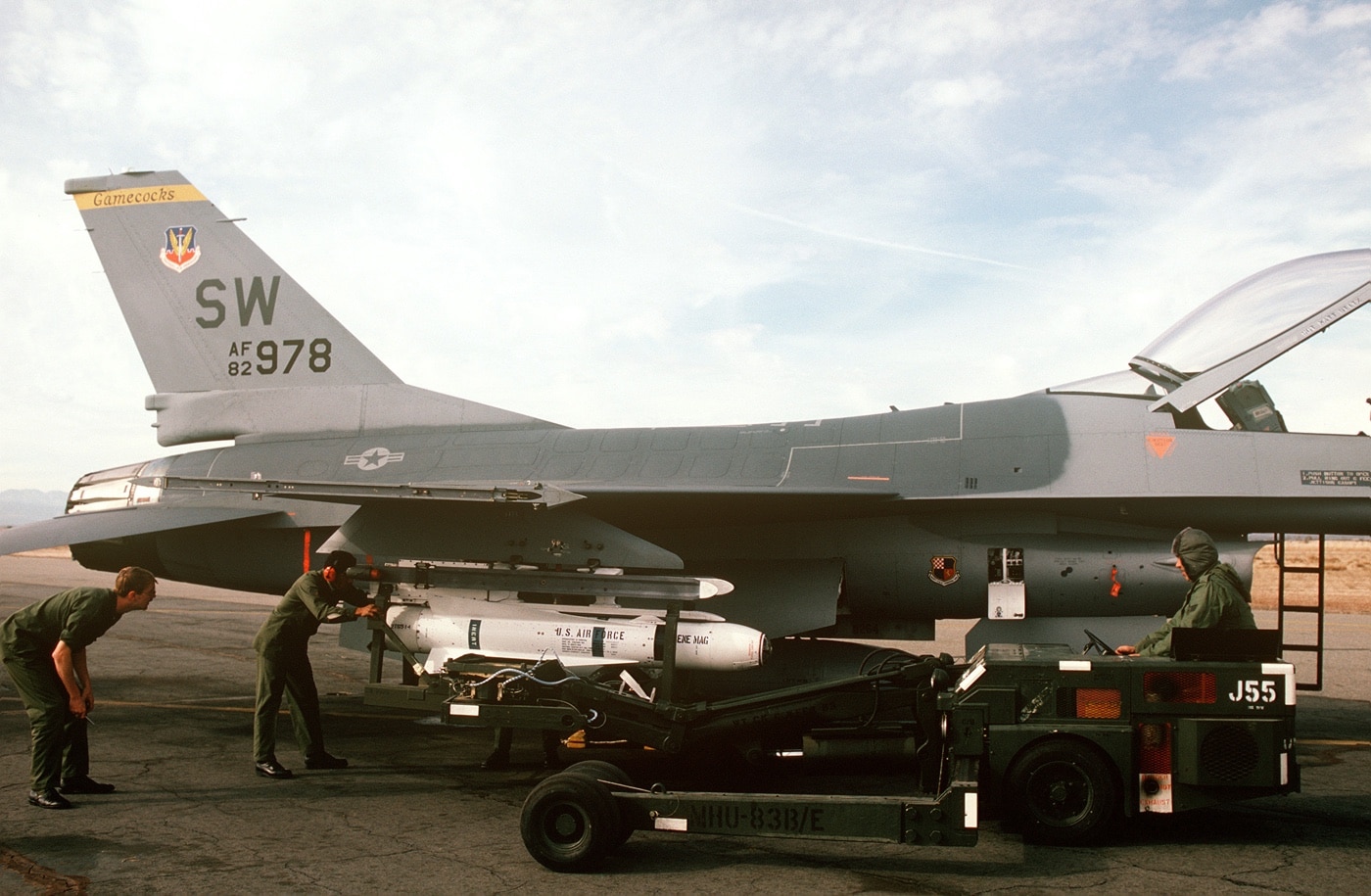
Successive variants of the F-16 Fighting Falcon progressively increased the weight, avionics, and capabilities, yet, the aircraft retained the most relevant features of the initial production model — notably the CCV technology, fly-by-wire controls, and the generous thrust-to-weight ratio using a single engine fed by a fixed vertical intake.
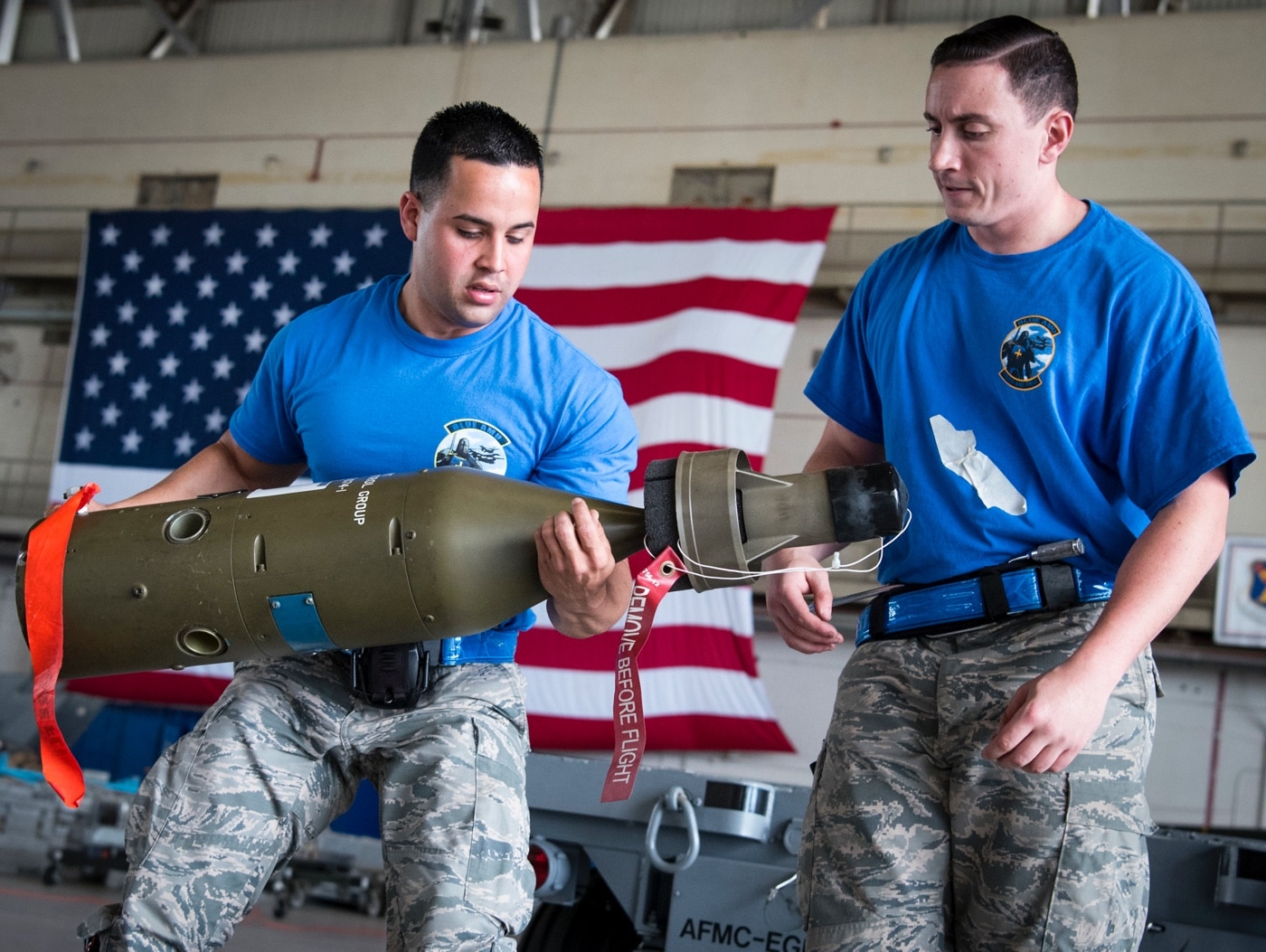
Originally produced by General Dynamics, the F-16 has been completed in nearly 140 different configurations from the prototype to the F-16V (Viper — a name employed for the aircraft by many of its pilots). Successive changes have included improved cockpit technologies, avionics, sensors, and weapons. Great effort was made to ensure the fighter was reliable and easy to maintain. The upgrades have increased the range and payload, and an improved powerplant provided greater engine thrust, while the range has been extended through the addition of conformal fuel tanks.
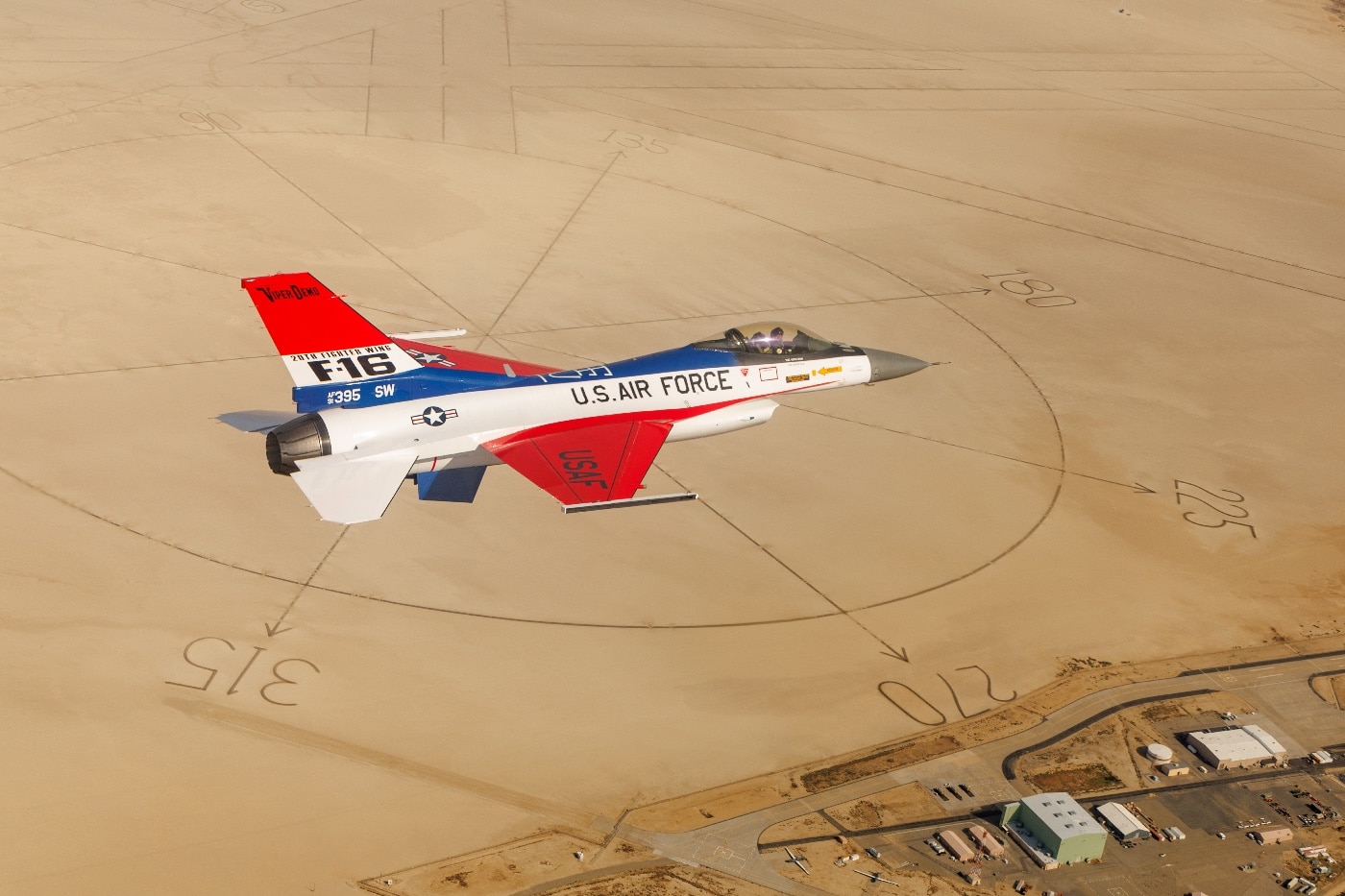
The first “sub-variant” of the basic F-16A was the combat-capable two-seat F-16B, which made its maiden flight in 1977, but with reduced fuel capacity. The tandem cockpits are roughly the same size as the one in the base A model, but with the bubble canopy extended. To make room for the second cockpit, the forward fuselage fuel tank and avionics “growth space” was reduced.
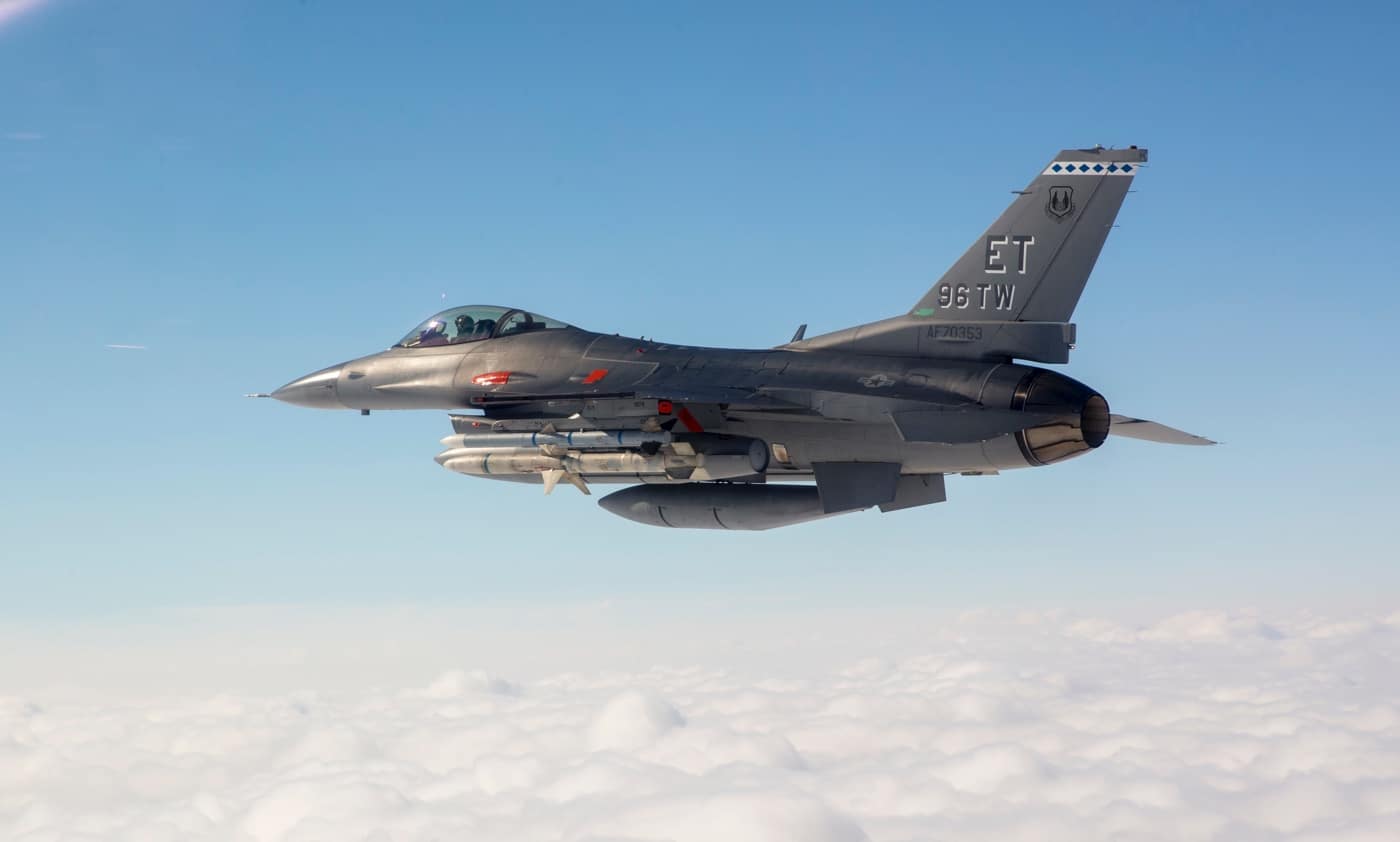
In the combat-capable model, the weapons officer is positioned behind the pilot, whereas in the training configuration, the forward cockpit is used by a student pilot with the instructor in the rear.
The F-16 Fighter Jet in Combat
According to the United States Air Force, “In an air-to-surface role, the F-16 can fly more than 500 miles (860 kilometers), deliver its weapons with superior accuracy, defend itself against enemy aircraft, and return to its starting point.” Its all-weather capability further allows it to accurately deliver ordnance during non-visual bombing conditions.
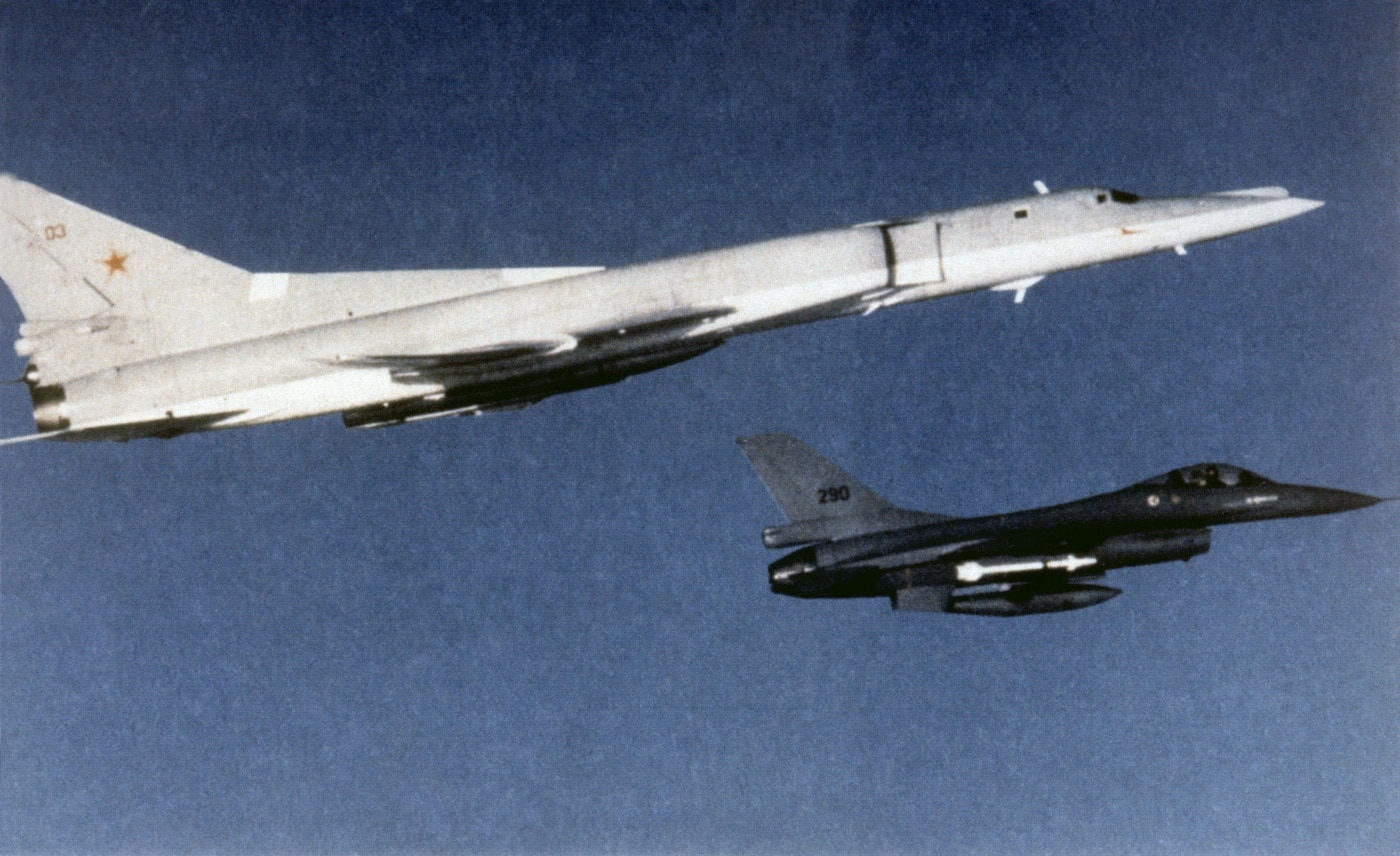
Due to the F-16’s combat-proven multirole capability, the aircraft has a well-earned reputation as a “force multiplier,” but it should be noted that for more than its first decade in service it was largely untested in combat — at least with the U.S. Air Force.
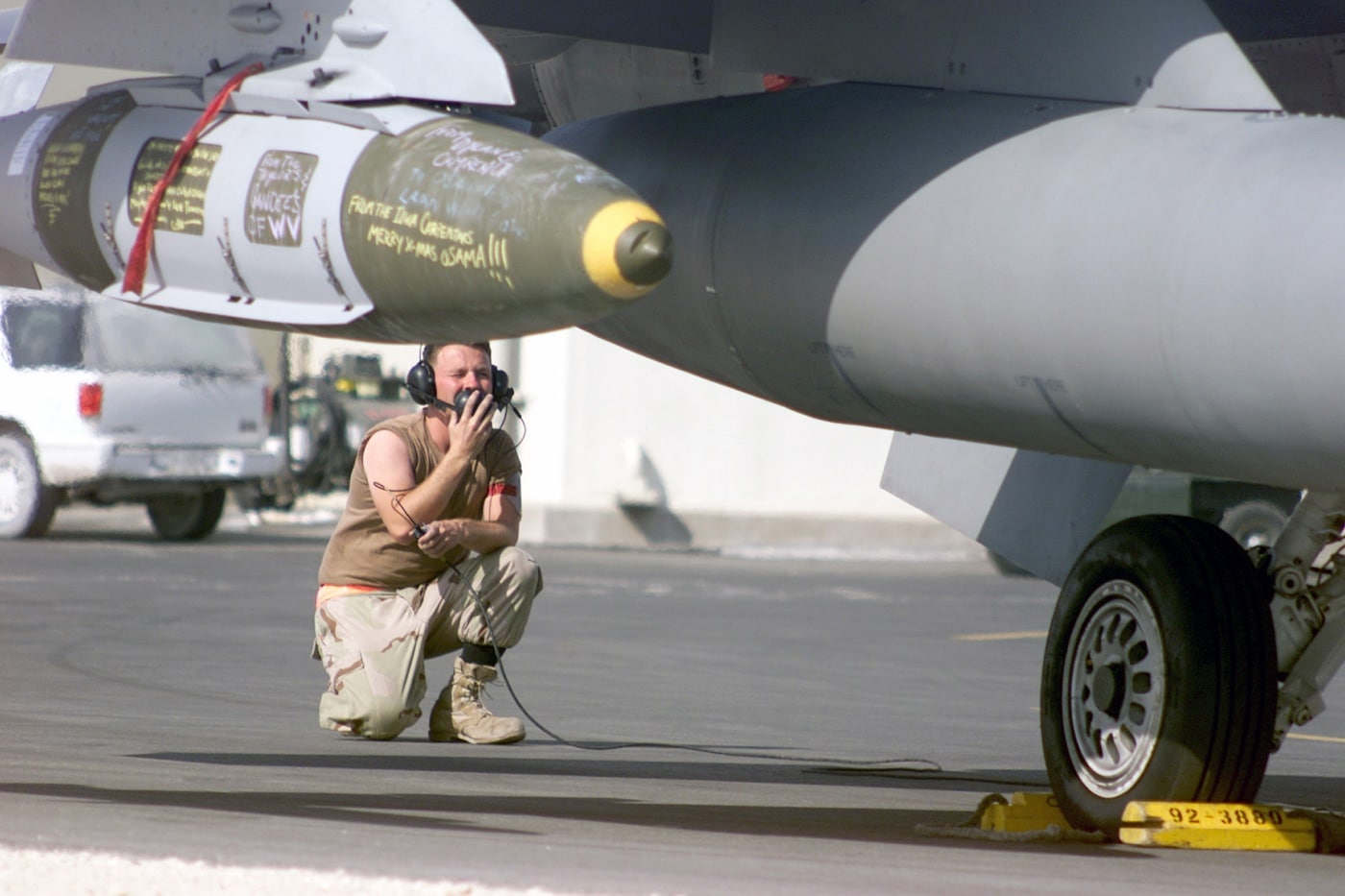
Even though it was developed to engage Soviet aircraft in the skies over Europe, the F-16’s first air-to-air engagement occurred in the Middle East. However, it was still one that involved West vs. East platforms as on April 28, 1981, a Fighting Falcon in service with the Israeli Air Force (IAF) engaged a Soviet-made Syrian Mi-8 helicopter, which was downed by the F-16’s cannon.
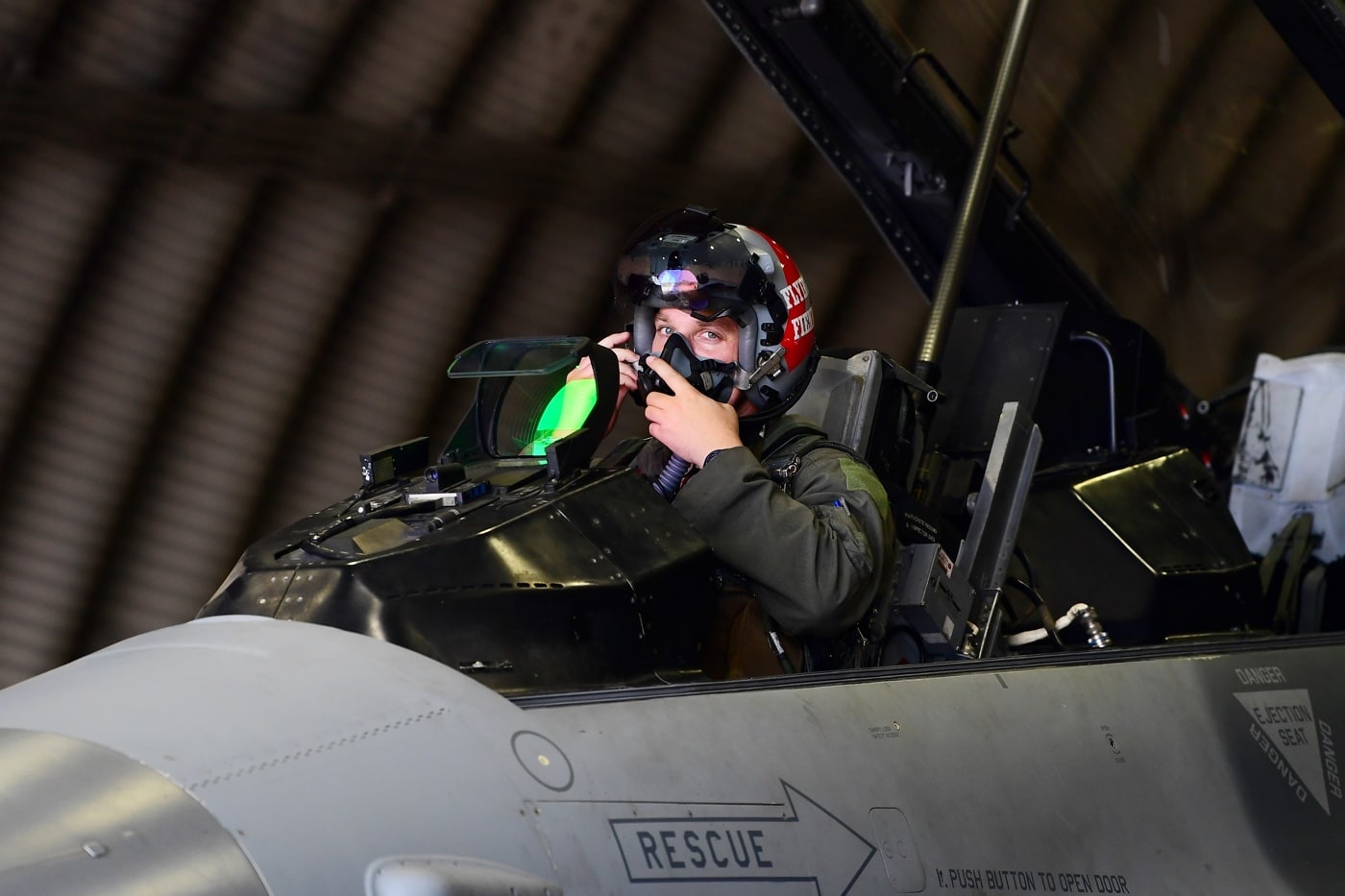
Less than three months later, on July 14, 1981, the IAF went on to achieve the first “kill” of another fighter when one of its F-16s shot down a Soviet-made Syrian MiG-21 (NATO reporting name Fishbed) while employing an AIM-9 Sidewinder air-to-air missile (AAM). That incident also came just over a month after IAF F-16s took part in Operation Opera — the raid to disable the Iraqi nuclear program. On June 7, 1981, the aircraft took off from a base in southern Israel, crossed the Jordanian desert, and bombed the still-under-construction Osirak reactor outside of Baghdad. It marked the first significant air-to-ground operation involving the F-16, highlighting its ground-attack capabilities. Those earlier incidents proved the F-16 Fighting Flacon was a highly agile and capable warbird.
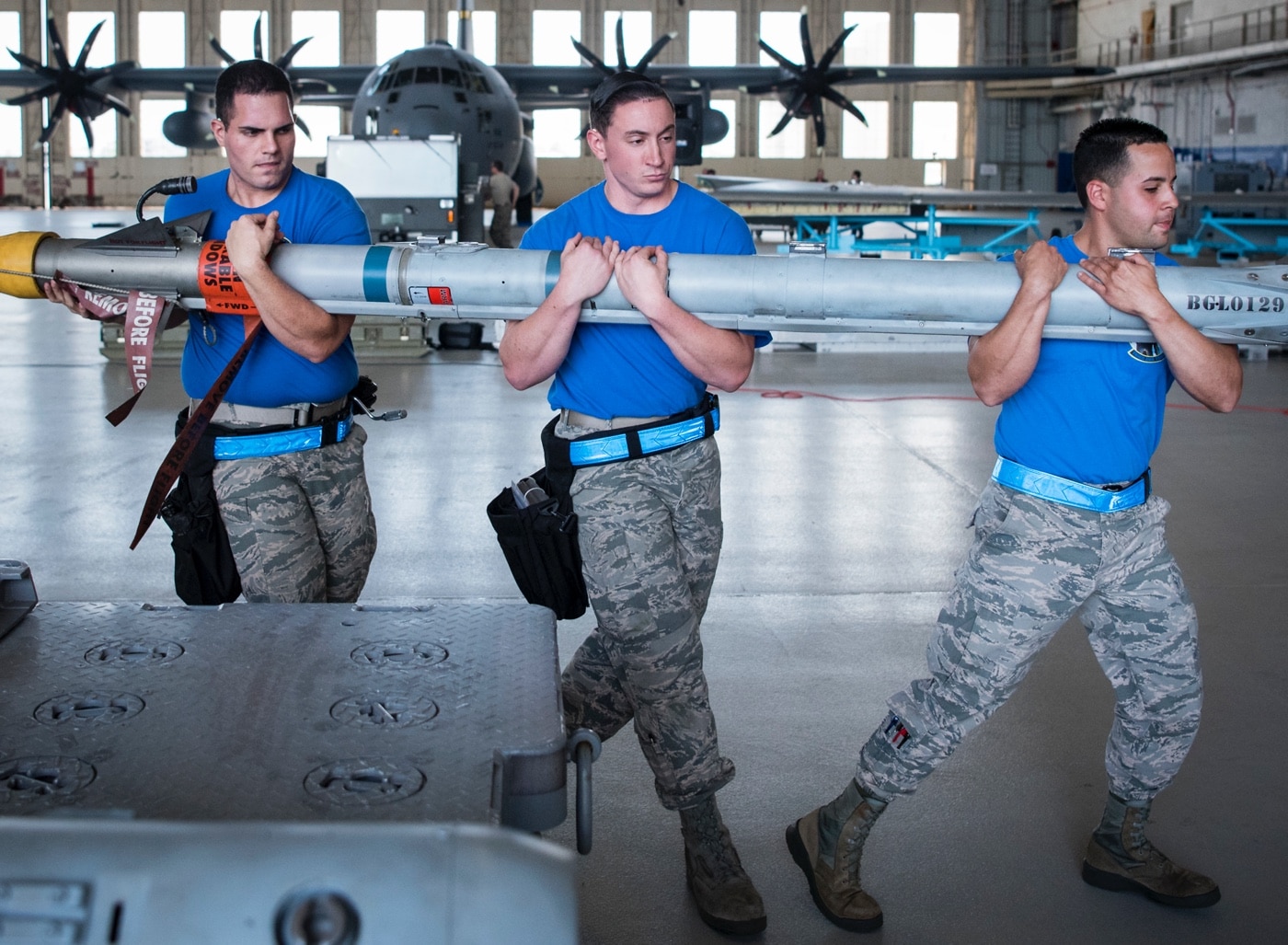
The United States Air Force’s F-16s finally had their chance to bloody their claws during Operation Desert Storm in 1991, when nearly 250 of the Fighting Falcons were employed in a total of 13,340 sorties on targets against Iraq — the most of any coalition aircraft. Nearly a third of those sorties were conducted at night; the average sortie duration was 3.24 hours, and almost every mission required air refueling. The fighters attacked airfields, military production facilities, Scud missile sites, and other high-value targets.
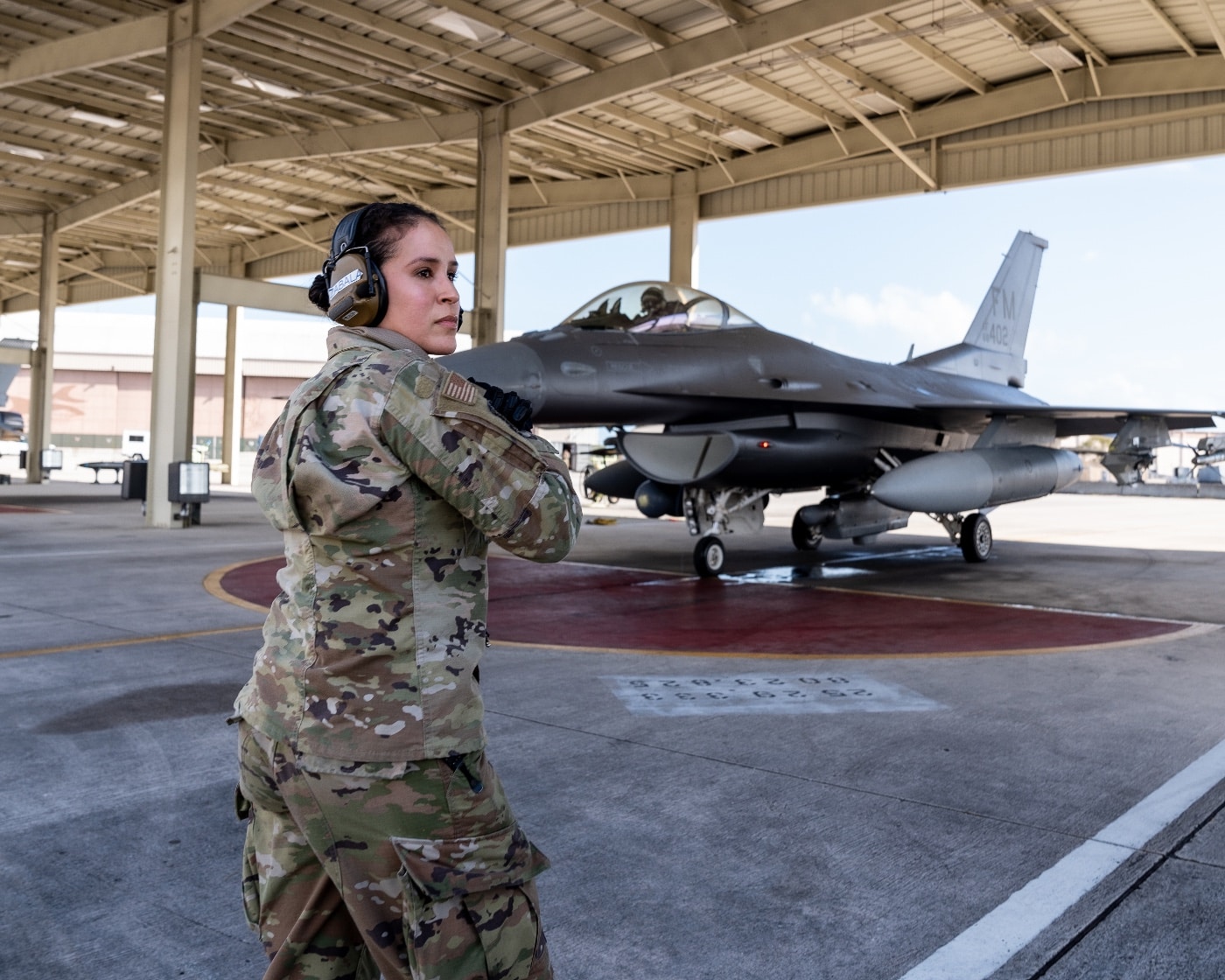
During the campaign, just three F-16s were lost to confirmed enemy ground fire, including two from radar-guided SA-6 and SA-3 surface-to-air missiles (SAMs), while another was downed by a shoulder-launched SA-16 missile. Several other Fighting Falcons took damage but were able to return to base. In total, seven F-16s were lost during the combat operations of Desert Storm.
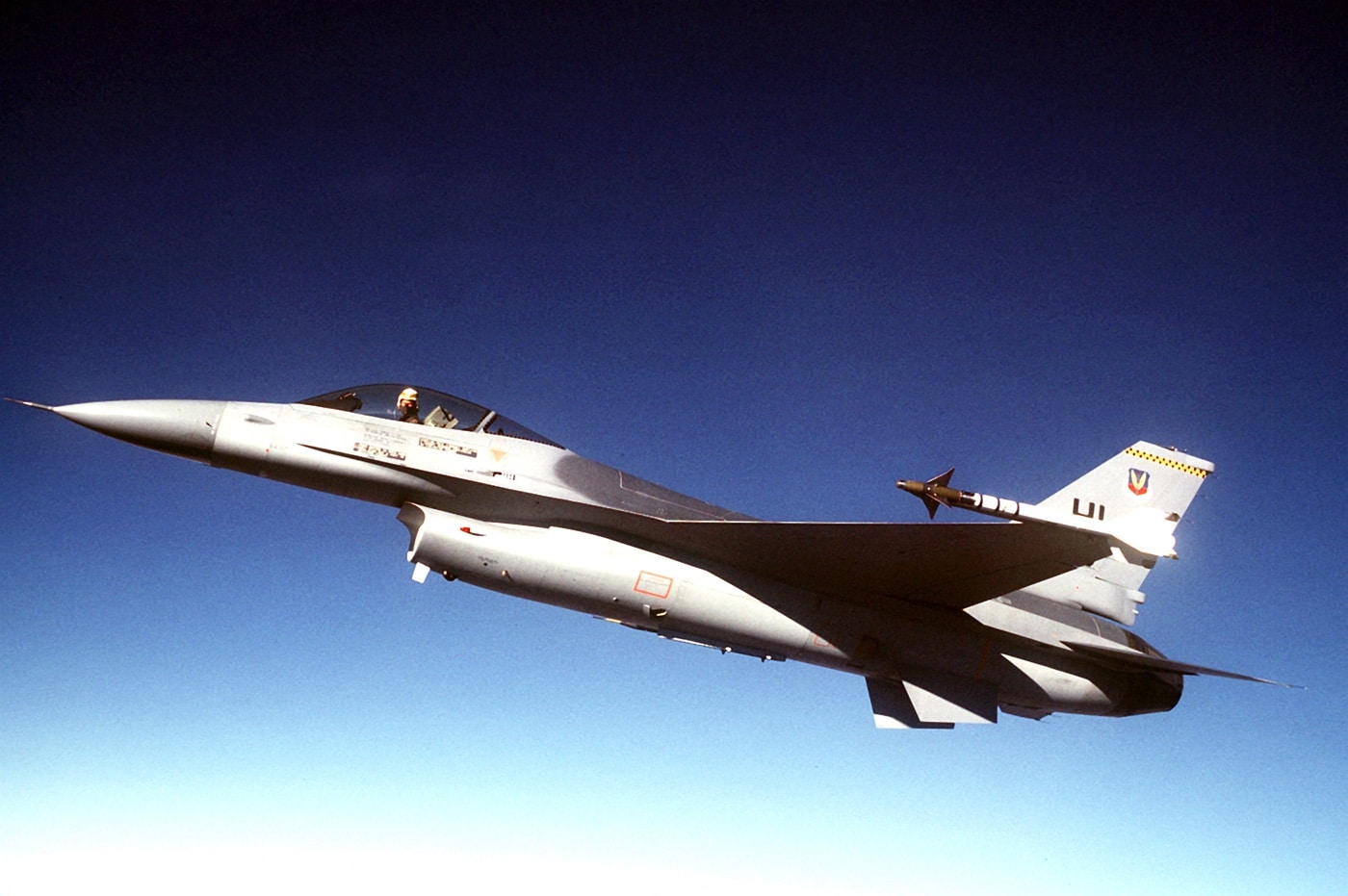
As most of Iraq’s aircraft were either destroyed on the ground or flew to Iran, it wasn’t until December 27, 1992 — during Operation Southern Watch — that the F-16 in service with the U.S. Air Force scored its first air-to-air kill. On that day, an F-16D downed an Iraqi MiG-25 (NATO reporting name Foxbat) with an AIM-120 AMRAMM. Less than a month later, on January 17, 1993, an F-16C shot down an Iraqi MiG-23 (NATO reporting name Flogger) also with an AMRAAM.
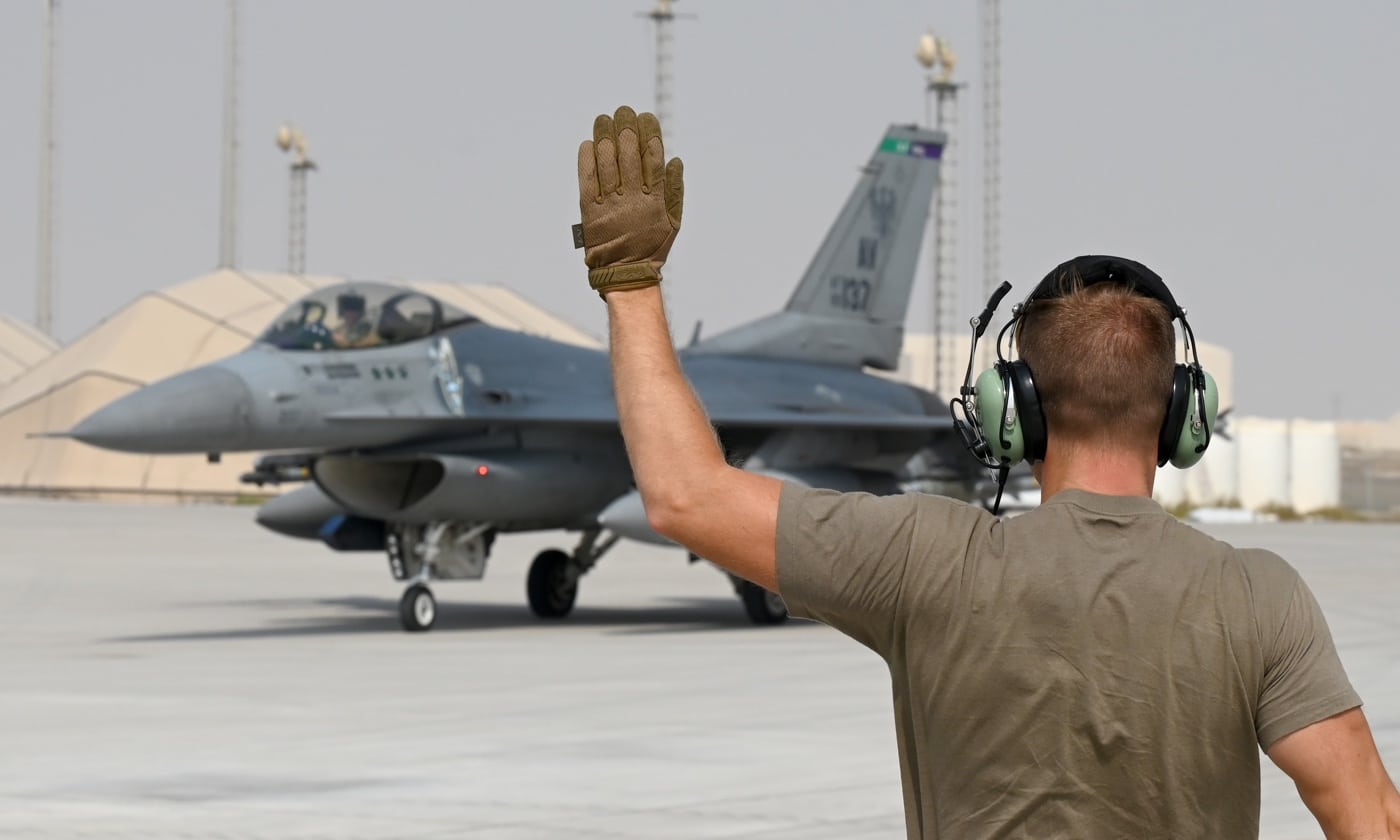
The F-16 continued to be employed in combat operations around the world, including in the skies over Iraq, in NATO peacekeeping operations in the former Yugoslavia; notably in the Global War on Terror (GWoT) where it took part in the air war in Afghanistan, Iraq, and Libya. In addition to service with the U.S. Air Force and IAF, the Fighting Falcon has seen action with the militaries of Bahrain, Egypt, Jordan, Morocco, the Netherlands, Norway, Turkey, and the United Arab Emirates among others.
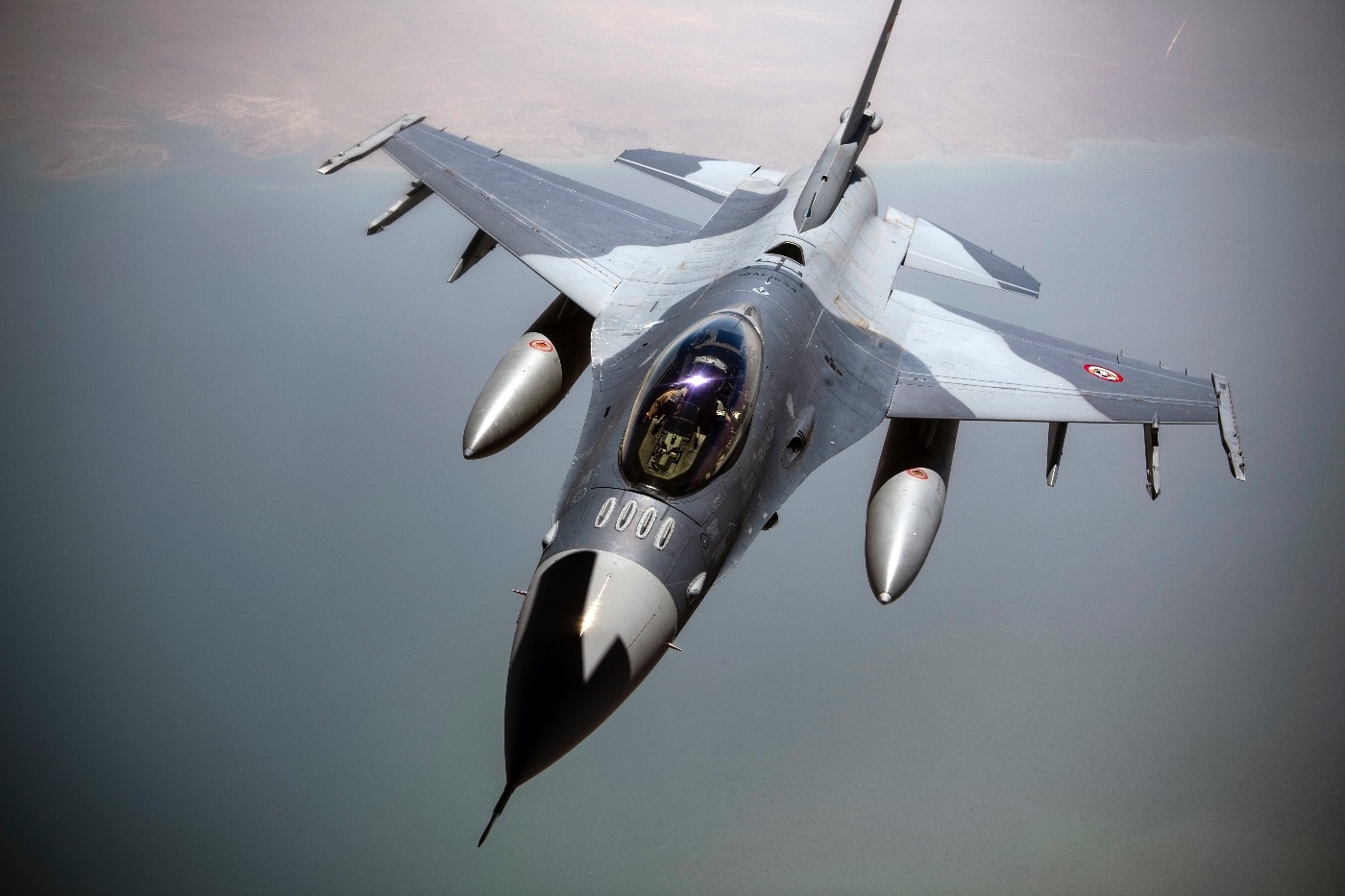
A largely forgotten operator of the F-16 Fighting Falcon was the Pakistani Air Force, and it had the distinction of being the only nation to use the multirole fighter against actual Soviet warplanes! Pakistan claimed to have employed the F-16 against numerous Soviet aircraft that illegally crossed into its airspace to target Afghan refugee camps. To counter that threat, Washington had provided Islamabad with F-16s that could not fire radar-guided beyond-visual range missiles.
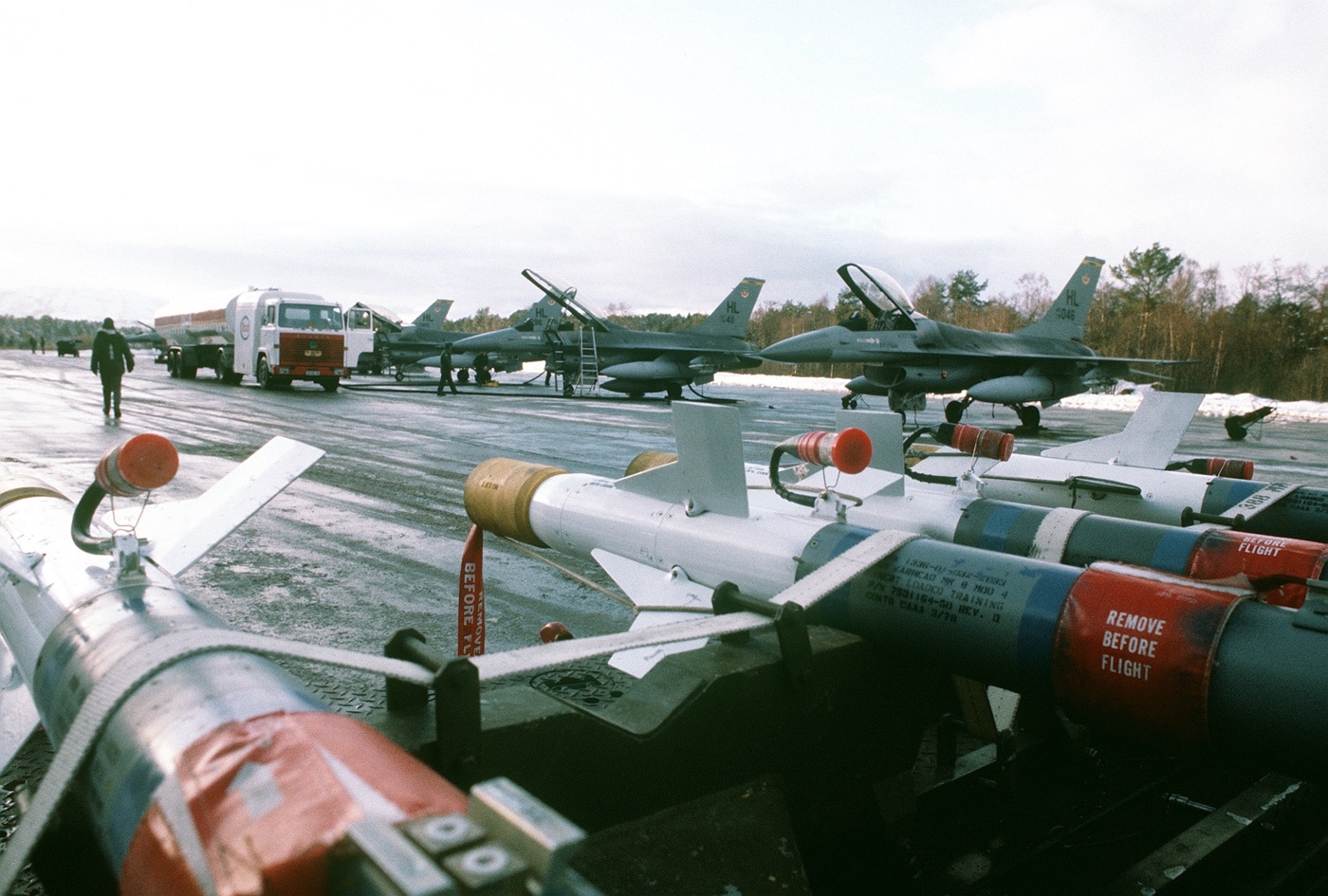
In addition to multiple Mi-8 helicopters, Pakistani figures claim that more than a dozen Soviet and Democratic Republic of Afghanistan (the Soviet puppet state) fighters were downed. One F-16 was lost, with Pakistan stating it was lost to friendly fire, but Moscow claimed it was shot down by a Soviet MiG-23.
The F-16 can thus claim numerous kills of Soviet aircraft, while at best one may have fallen victim to a MiG.
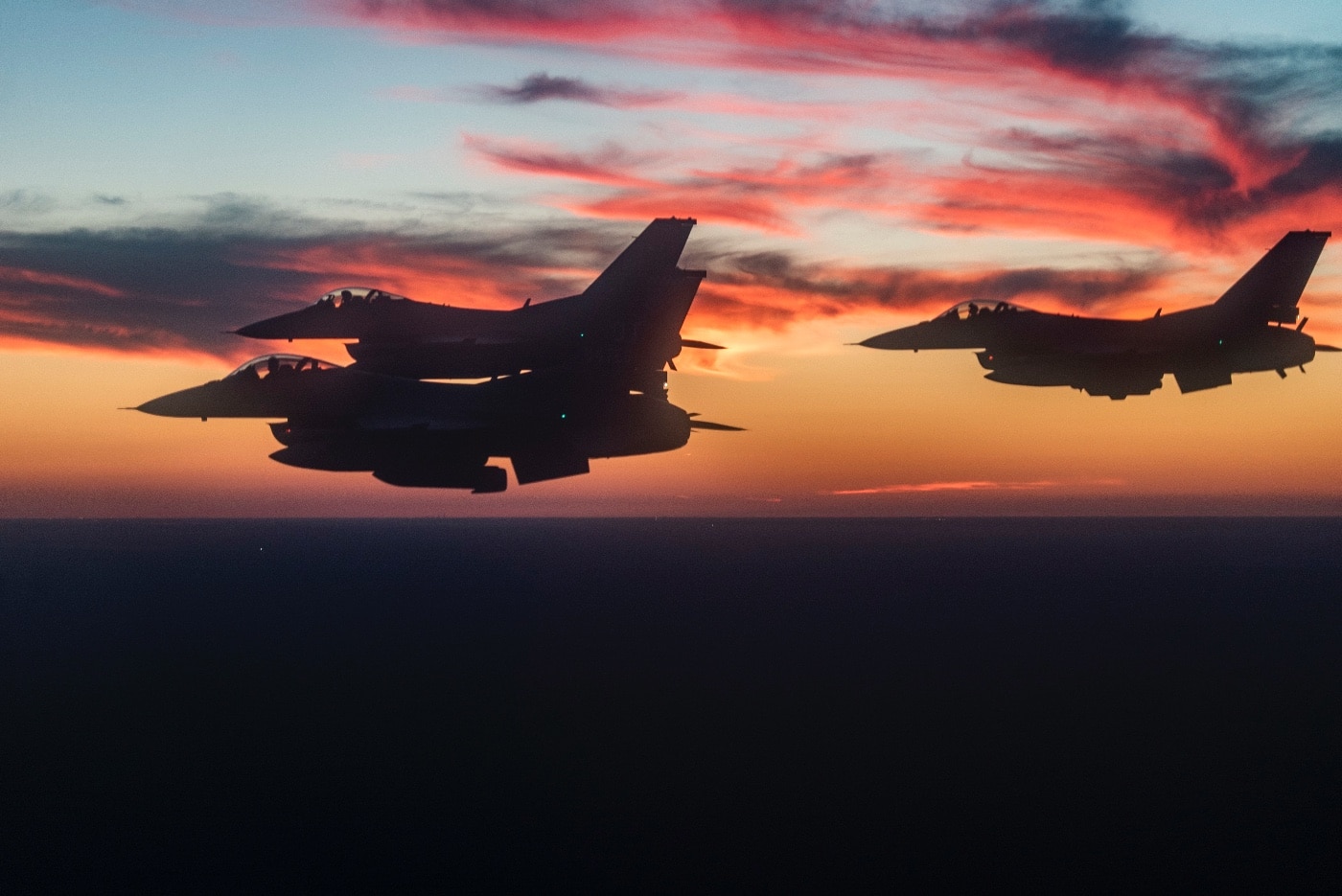
In addition to a combat fighter, the F-16 Fighting Falcon is currently flown by the United States Air Force Demonstration Squadron — more commonly known as the Thunderbirds. The team flies six F-16C and two F-16D Fighting Falcons, which they’ve operated since 1992 (upgraded from the F-16A model adopted in 1983).
Final Thoughts on the F-16 Fighting Falcon
Whether it is in performing jaw-dropping aerial maneuvers with the Thunderbirds at air shows around the country, or in combat operations with the U.S. Air Force and its allies, the F-16 is a 50-year-old combat fighter that isn’t getting older, it has gotten better, and is nearly unstoppable.
Editor’s Note: Be sure to check out The Armory Life Forum, where you can comment about our daily articles, as well as just talk guns and gear. Click the “Go To Forum Thread” link below to jump in!
Read the full article here

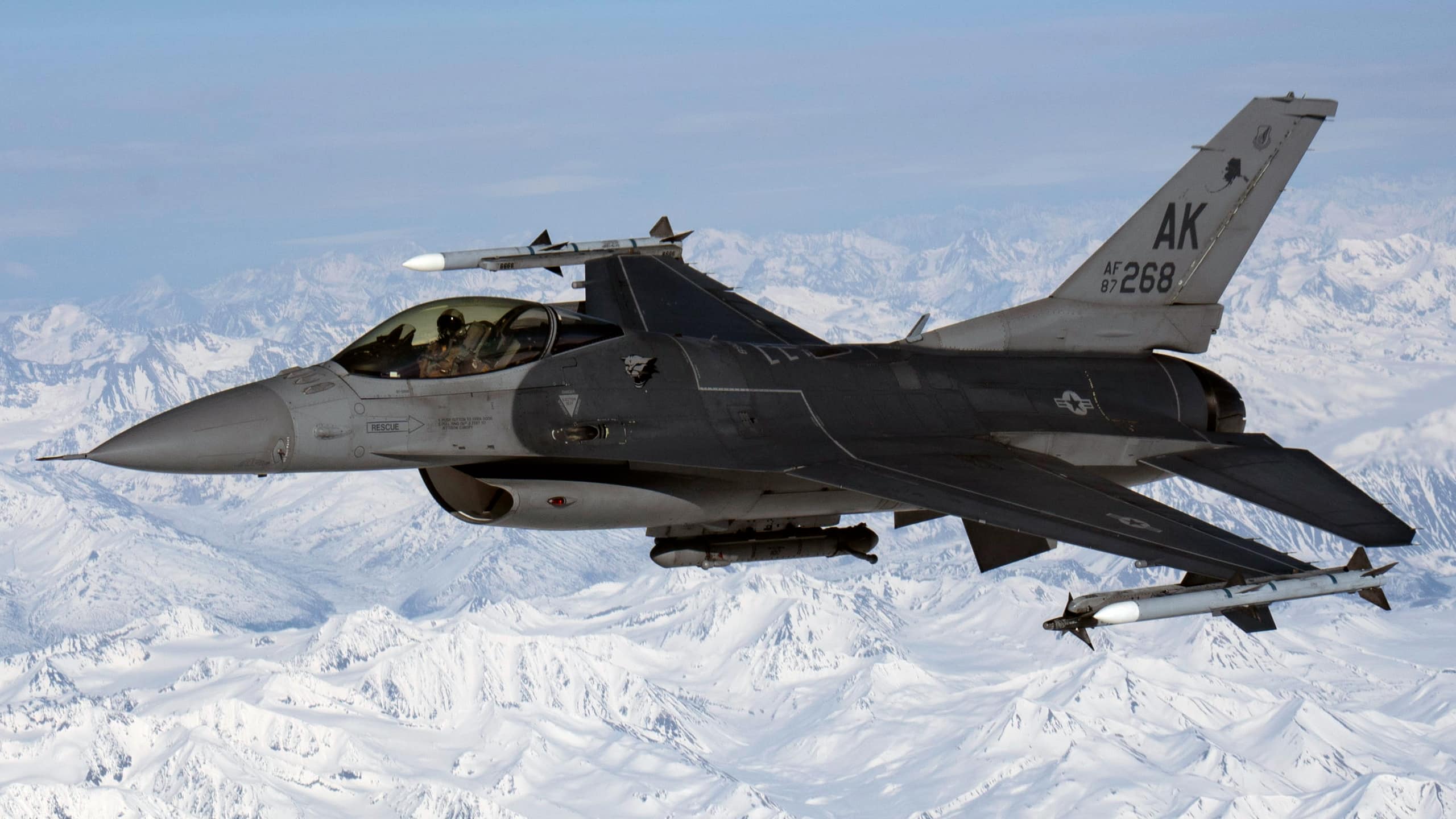


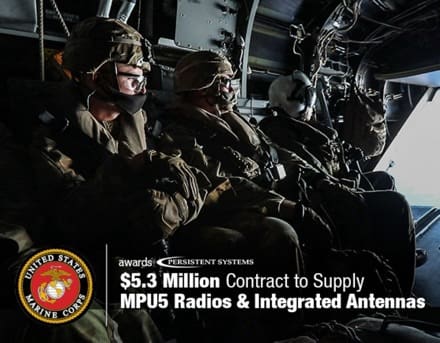

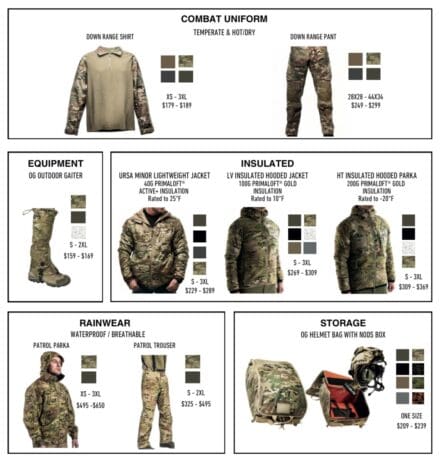
Leave a Reply